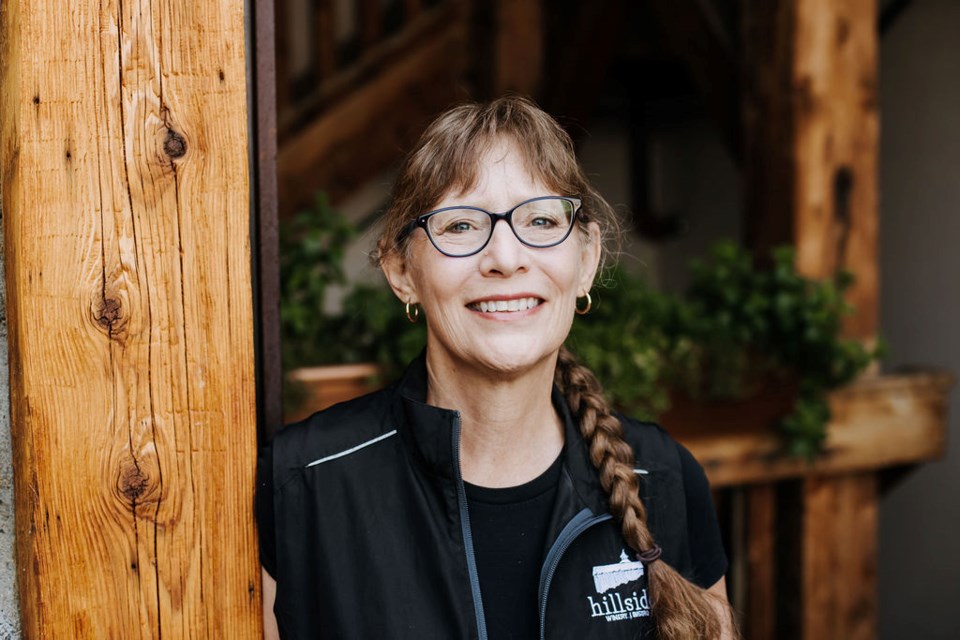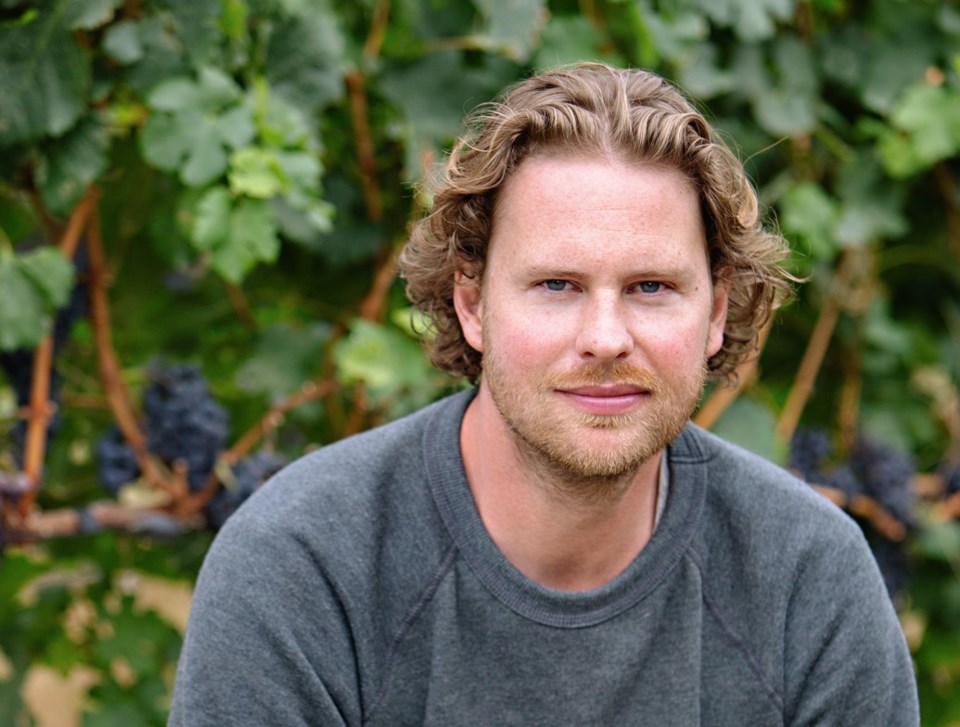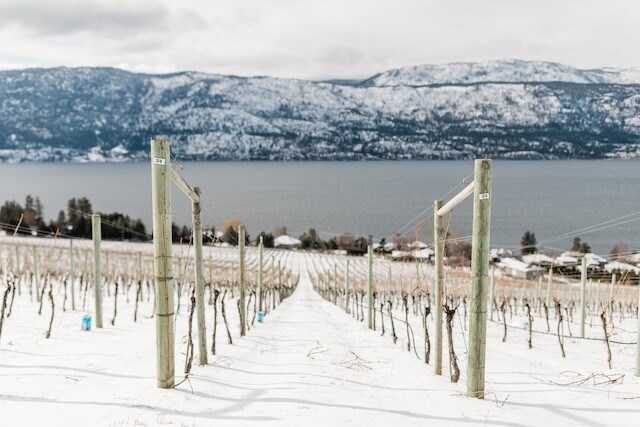Government help snipping red tape and resilient grape vines in pockets of the Okanagan have made for a better year for the B.C. wine industry than many feared.
A severe cold snap in mid-January saw temperatures plunge below -20 C after weeks of what had been mild weather, shocking grape vines to the point that many winemakers said they believed their vines would die.
Some B.C. winery principals and winemakers are thanking their lucky stars that almost all their grape vines remain alive even if their production level this year has been largely wiped out.
Others are taking solace that the B.C. government came through with needed regulatory changes.
Those legal tweaks allow B.C. wineries to import and make wine with Washington state grapes and grape juice without hurdling cumbersome bureaucracy or losing a government subsidy—as long as they only produce to the level that is their average for the past five years using B.C. grapes.
No one knows what winter blasts Mother Nature will next send B.C.’s way. Weather prognosticators are predicting a 71-per-cent chance of an El Nina winter, which could mean wetter and colder weather.
Pockets of B.C. wine country saw most vines survive
Industry observer and wine author John Schreiner told BIV that geography helped vines in some parts of B.C. wine country survive.
“Some of those vineyards around Osoyoos Lake got spared the worst of the damage because the lake, unusually, had not yet been frozen,” Schreiner said.
“It’s usually frozen by Christmas, but this year it wasn’t because it was a warm fall. When the temperature suddenly plunged to -20 C or -25 C, there was still some moderating heat from the lake.”
A similar phenomenon happened near Okanagan Lake and Skaha Lake, say winemakers in those regions.
“Going by the low temperature and the understood cold-hardiness of grapevines, there was an expectation that there would be widespread vine death,” said Hillside Winery winemaker Kathy Malone, whose winery is in the Naramata Bench, near Okanagan Lake.
“The fact that that the vines have survived is financially extremely good news.”
This is because it takes grape vines at least three years to produce fruit worth using to make wine, she explained.
Less than four per cent of her vines are dead, Malone told BIV.

Her available B.C. grape tonnage collapsed this year, but she is optimistic about next year.
In an average year, she could expect to make wine with about 180 tonnes of grapes, including fruit bought from other B.C. growers.
Last year, which was hampered by a separate sustained deep freeze in December 2022, saw Hillside make wine with 72 tonnes of grapes.
This year, Malone calculated that she has access to less than one tonne of B.C. grapes.
That is why she is newly buying Washington state grapes sourced through B.C.’s Poplar Grove Winery. She does not yet know exactly how many tonnes of grapes she will be able to buy.
Painted Rock Estate Winery owner John Skinner expressed similar sentiments.
He was ecstatic that almost all his grape vines survived.
“Considering we produce reds, it would have been just brutal otherwise,” he said.
“If you start from scratch, you don’t get cash flow for five years, and that would be devastating.”
His said his production this year is largely shot but he will be able to manage.
Painted Rock’s grape tonnage tends to be between 75 and 110 tonnes per year, he said. In 2022, it produced 110 tonnes, while last year that dropped to about 80 tonnes. This year he expects about eight tonnes.
Skinner plans to skip making red wine this year. Any red grapes he harvests will be used to make rosé, he said.
“The biggest crop we had was Chardonnay, which was probably half of what it is normally,” Skinner said.

Most wineries are suffering vine loss between 14 per cent and 16 per cent, said Paul Sawler, chair of the marketing association Wine Growers BC.
Sawler, who is also vice-president of sales and marketing at Dirty Laundry Vineyard, told BIV that about 10 per cent of the vines at his Summerland winery were killed.
His grape harvest this year, however, is non-existent.
Dirty Laundry’s 100 acres of vines usually produce between 400 and 450 tonnes of grapes, he said.
“This year we didn’t even get a tonne,” Sawler said.
Vine loss is most pronounced north of Osoyoos Lake and around the Black Sage Bench area, said Sawler and Schreiner.
Schreiner said he knows many winery owners are putting properties up for sale.
“I’m sure that vineyard land values have gone south, seriously,” he said.
Cheaper vineyard land could be good news for deep-pocketed wine-sector entrepreneurs, although Frind Estate Beach Winery owner and land-accumulator Markus Frind told BIV that he has not recently been scouting for new vineyard land.
Frind founded the online dating site Plenty of Fish in 2003 and sold it for US$575 million in cash in 2015, as the company’s sole owner.
He entered the B.C. wine sector in 2017, when he spent $7.2 million to buy a 13-acre site that is now Frind Estate Beach Winery, and had previously been home to former premiers W.A.C. Bennett and son Bill Bennett.
Frind then spent large sums buying a 310-acre patch of raw land he planned to turn into a vineyard, about 100 acres of land across from the Vernon Airport and 820 acres of land nearby, on Bella Vista Road.
His beachfront winery has about 12.5 acres of Maréchal Foch planted in vineyards and all of those vines survived, Frind told BIV.
“That West Kelowna property was the warmest place in the entire valley out of all our properties because there is so much lake exposure,” he said.
His attention of late, instead of buying vineyards, has been on reviving his e-commerce company Cymax Group Technologies, and on running his RVezy, a venture that is essentially like Airbnb but for recreational vehicles, he said.
Frind’s 44-year-old wife, Annie Frind, died unexpectedly in September so he has also spent time grieving, he added.
Some B.C. wineries survive with Washington grapes
Back in February, Blasted Church winemaker Evan Saunders feared the worst for his winery near Skaha Lake.
He was one of the first B.C. winemakers to publicly say that buying Washington state grapes would be one of the only ways that his winery could produce 2024-vintage wines and keep staff employed.
At the time, he thought the process might be complicated.
The B.C. government requires all wineries with land-based winery licences to make at least 4,500 litres of wine from their own grapes.
The government waived that requirement for this year.
Saunders had also thought that he might have to go through hoops to become licensed as a commercial winery to be eligible to buy and make wine with Washington state grapes.
The B.C. government again, however, tweaked regulations so the process was relatively easy for Saunders to go south and buy grapes this year from Andrews Family Vineyards, located in the Horse Heaven Hills region of Washington state, he said.
“Grape juice is treated separately from whole clusters of grapes,” he said. “To bring in whole clusters of grapes, you needed a ministerial exemption to prove that there is a shortage that could not be satisfied through B.C. or neighbouring provinces.”
He stickhandled necessary paperwork and is now bringing in both juice and whole grape clusters, he said.
His 40-acre property normally provides about 140 to 150 tonnes of grapes but this year is yielding less than one tonne, he said. He normally would buy about 140 tonnes from other Okanagan growers, he added.
Saunders said he thinks he will be able to buy about 15 tonnes of grapes from growers in the Osoyoos region, and then another 130 to 140 tonnes from Washington state growers.
B.C. regulatory authorities have yet to confirm labelling requirements for wine made with Washington state grapes.
“Our labels will be very, very clear as to what is in the bottle,” Saunders said.
Editor's note: Story updated Oct. 28 to clarify year that Plenty of Fish was sold.




